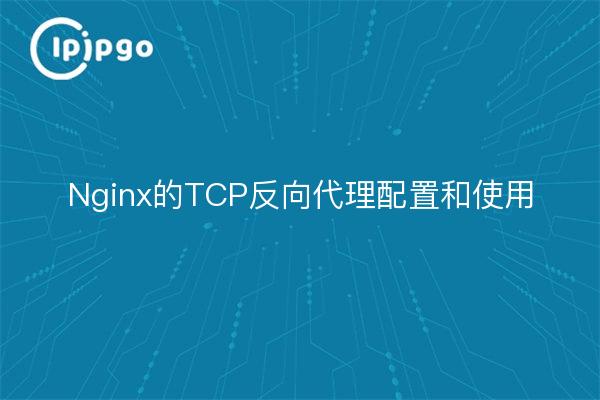
In the network world, with the development of the Internet, we often encounter some scenes that require reverse proxy.Nginx, as a powerful WEB server and reverse proxy server, can help us easily build a high-performance network environment. Today, I want to introduce you to the configuration and use of Nginx's TCP reverse proxy.
What is a TCP reverse proxy?
Before we dive into Nginx's TCP reverse proxy, let's first understand the concept of TCP reverse proxy.TCP reverse proxy is a server architecture that forwards a client's request to a back-end server through a proxy server, and then transmits the back-end server's response back to the client. Compared to traditional forward proxies, TCP reverse proxies play a key role in network transmission.
TCP Reverse Proxy Configuration for Nginx
First, we need to configure Nginx's configuration file accordingly. Open the Nginx configuration file, you can see a "stream" block, in which we need to add the configuration of the TCP reverse proxy.
stream {
server {
listen 8888;
proxy_pass 192.168.1.100:8080;
}
}In the above configuration, "listen" specifies the port on which the proxy server listens, and "proxy_pass" specifies the address and port of the backend server. When a client connects to port 8888 of the proxy server, Nginx forwards the request to port 8080 of the backend server and passes the response back to the client.
In addition to the basics, Nginx supports some advanced TCP reverse proxy configurations. Here is an example:
upstream backend {
upstream backend {
server backend1.example.com:8080;
server backend2.example.com:8080;
}
server {
listen 8888; proxy_pass backend;
proxy_pass backend; } server { listen 8888; proxy_pass backend; }
}
}In the above configuration, multiple backend servers are defined in the "upstream" block and named "backend". In the "server" block, load balancing is achieved by specifying "proxy_pass backend", Nginx will automatically distribute requests to different backend servers.
Nginx's TCP Reverse Proxy Usage
Once the configuration is complete, we need to start Nginx so that it starts listening on the specified port. Start the Nginx service by typing the following command in the terminal:
"`shell
sudo nginx
“`
After the startup is complete, we can use the TCP client tool to test. Taking telnet as an example, we can connect to port 8888 of the proxy server, then send a request and finally view the returned response.
"`shell
telnet localhost 8888
GET / HTTP/1.1
Host: www.example.com
“`
In the above example, we send a GET request to the proxy server and specify the Host header.Nginx forwards the request to the backend server and passes the response back to the telnet client. With the telnet client tool, we can visualize the request and response.
summarize
By configuring and using Nginx's TCP reverse proxy, we can realize a high-performance and highly reliable network environment. Whether in load balancing or in application scenarios, Nginx has excellent performance. I hope this article can help you understand and use Nginx's TCP reverse proxy.
In the actual use of the process, we need to carry out the corresponding configuration according to the specific business needs and reasonable optimization. Through continuous practice and learning, we can further deepen our understanding of the powerful features and flexibility of Nginx and play its important role in network architecture. May we continue to make progress and achieve more results in the process of exploring Nginx!








